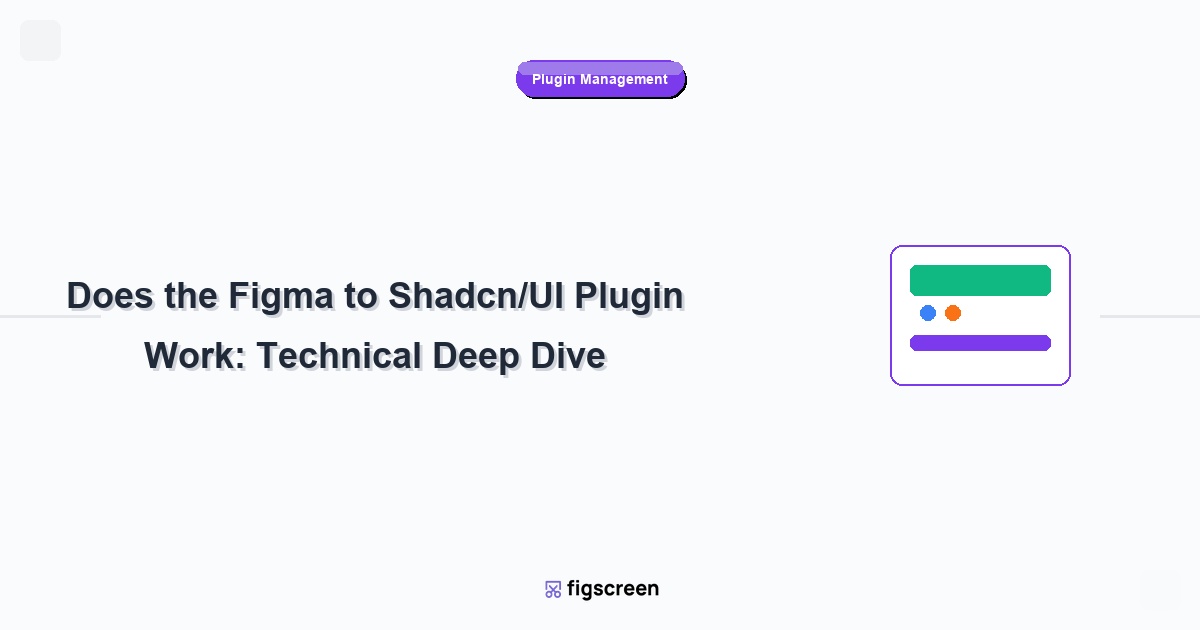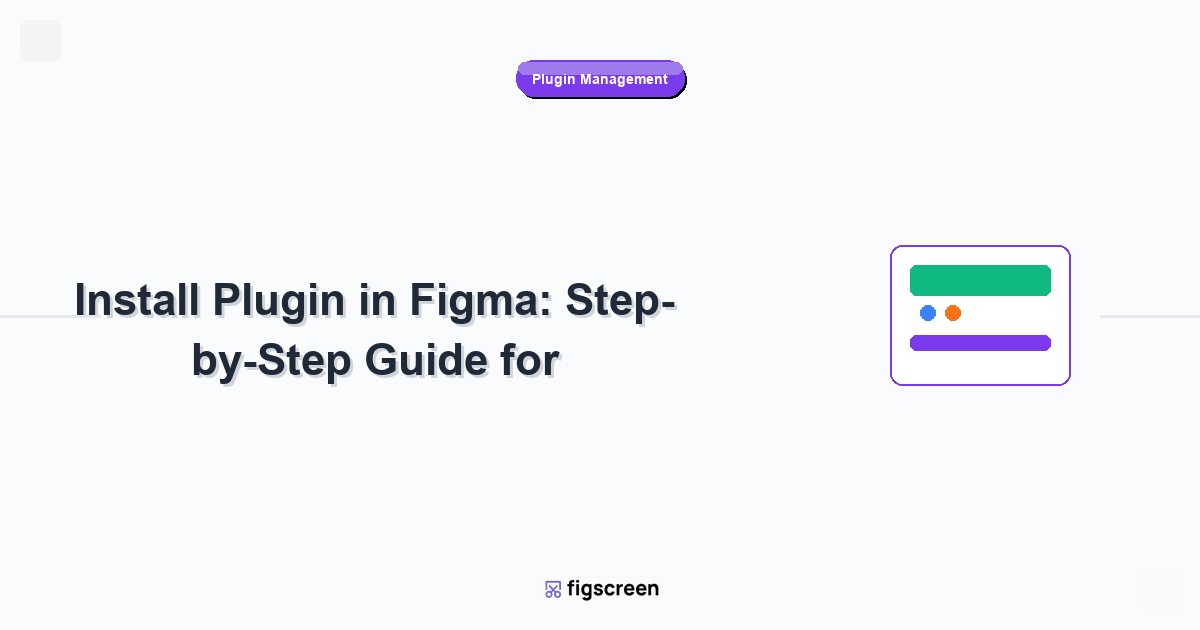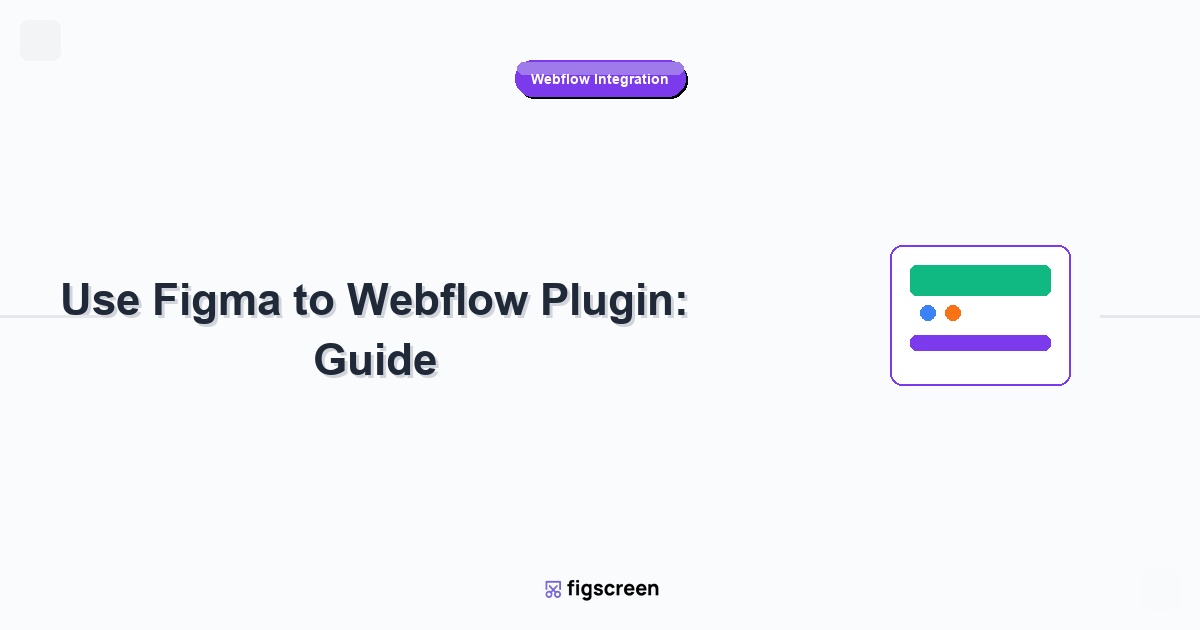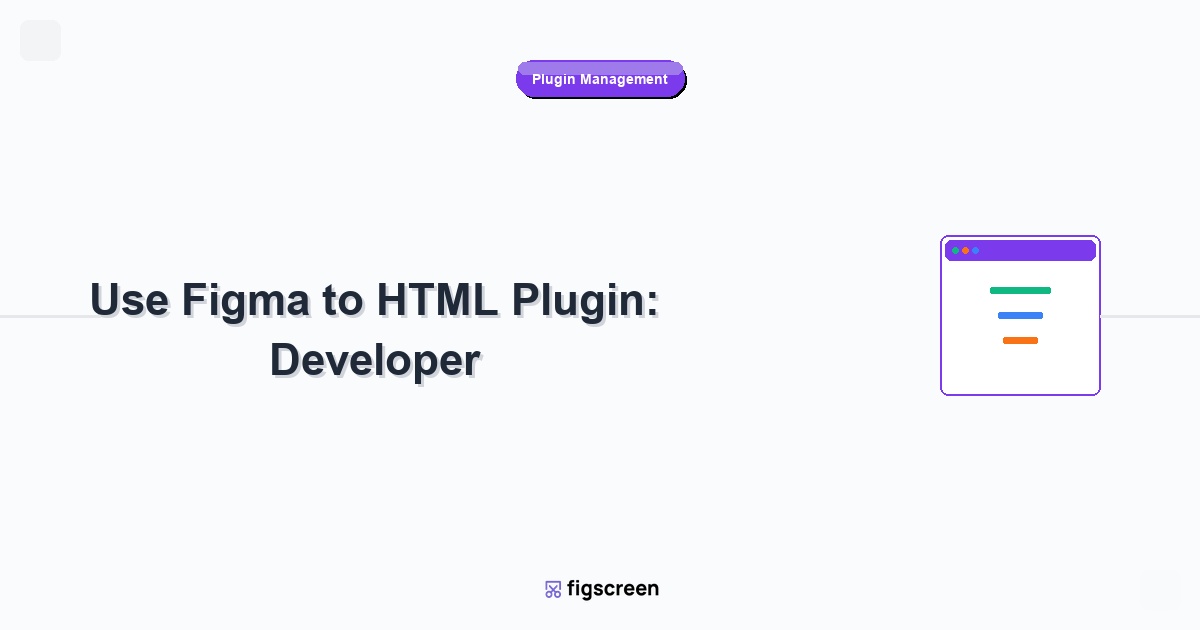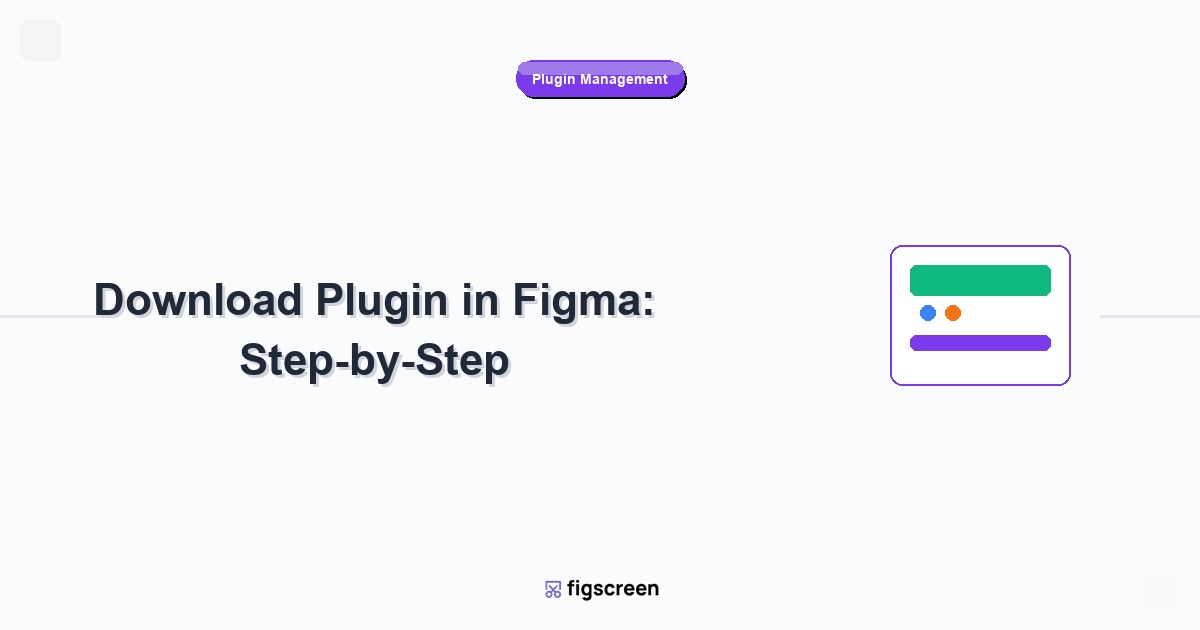Wireframing in Figma has evolved significantly in 2025, with advanced plugins and native features transforming how UX designers approach rapid prototyping. Unlike the code-focused workflows covered in our HTML generation guide, wireframing emphasizes user experience validation, concept exploration, and collaborative design thinking.
Why Wireframing Plugins Are Essential in 2025
Modern wireframing extends far beyond basic sketching to encompass sophisticated UX methodologies and collaborative workflows:
- Rapid Ideation: Generate multiple concept variations quickly for comparison and validation
- Stakeholder Communication: Clear, low-fidelity designs that focus on functionality over aesthetics
- User Flow Validation: Test navigation patterns and user journeys before high-fidelity design
- Accessibility Planning: Structure content hierarchy and interaction patterns for accessibility
- Development Planning: Communicate layout requirements and functional specifications clearly
- Cross-Platform Consistency: Establish consistent patterns across web, mobile, and other platforms
2025 Advantage: Modern wireframing plugins integrate with Figma’s enhanced Auto Layout, variables system, and collaborative features for more sophisticated prototyping workflows.
Understanding Modern Wireframing Approaches
Wireframing in 2025 embraces multiple methodologies and techniques:
1. Low-Fidelity Rapid Prototyping
Focus on core functionality and user flows without visual design distractions:
Key Principles
- Content Priority: Emphasize information hierarchy and content organization
- Functional Focus: Highlight interactions, navigation, and user tasks
- Speed Over Perfection: Rapid iteration and validation of concepts
- Collaborative Foundation: Clear communication tool for stakeholders
2. Annotated Design Documentation
Comprehensive wireframes that serve as technical specifications:
Documentation Elements
- Interaction Specifications: Detailed descriptions of user interactions and system responses
- Content Requirements: Specifications for dynamic content and data sources
- Business Logic: Rules for conditional content and user permissions
- Technical Constraints: Platform limitations and technical considerations
3. Responsive Wireframe Systems
Multi-device wireframing that accounts for responsive design patterns:
Responsive Considerations
- Breakpoint Planning: Design for multiple screen sizes from the wireframe stage
- Content Adaptation: Plan how content reflows and reorganizes across devices
- Navigation Patterns: Consider different navigation approaches for various screen sizes
- Touch Interaction: Plan for touch targets and mobile-specific interactions
Top Wireframing Plugins for 2025
Based on current UX design trends and plugin ecosystem developments:
1. Wireframe Kit Plugins
Comprehensive libraries of wireframe components and patterns:
Popular Wireframe Libraries
- Wireframe Kit: Extensive collection of low-fidelity UI components
- UX Flow: Specialized components for user flow documentation
- Mockup Library: Cross-platform wireframe components for web and mobile
- Design System Wireframes: Components that integrate with design systems
2. Content Generation Plugins
Tools for populating wireframes with realistic content:
Content Automation Tools
- Content Reel: Realistic content generation for wireframes and prototypes
- Lorem Ipsum Generators: Various text generation tools with different contexts
- Image Placeholders: Contextual image placeholders for different content types
- Data Populators: Tools for generating realistic data sets and user information
3. Flow and Journey Mapping
Plugins that support user journey and flow documentation:
Journey Mapping Tools
- Autoflow: Automatic user flow diagram generation from prototypes
- User Journey Maps: Templates and tools for journey mapping
- Flow Kit: Specialized components for flowchart and process documentation
- Site Map Generators: Tools for creating information architecture diagrams
4. Annotation and Documentation
Plugins that enhance wireframe documentation and specification:
Documentation Enhancement
- RedLines: Specification annotations and measurements
- Annotate: Advanced annotation tools for design documentation
- Spec Generator: Automatic specification generation for developers
- Comment Manager: Enhanced commenting and feedback management
Step-by-Step: Creating Effective Wireframes
1Project Setup and Planning
Before beginning wireframing, establish clear project parameters:
Define Project Scope
- User Personas: Identify primary and secondary user groups
- User Goals: Define what users need to accomplish
- Business Objectives: Align wireframes with business requirements
- Technical Constraints: Understand platform limitations and requirements
Establish Wireframe Standards
- Fidelity Level: Determine appropriate level of detail for project stage
- Annotation Style: Establish consistent annotation and documentation approaches
- Component Library: Select or create appropriate wireframe component libraries
- Review Process: Define stakeholder review and approval workflows
2Information Architecture Development
Create the structural foundation for your wireframes:
Content Inventory and Organization
- Content Audit: Catalog all required content and functionality
- Content Hierarchy: Establish information priority and relationships
- Navigation Structure: Plan primary, secondary, and utility navigation
- Search and Filtering: Plan content discovery and organization tools
User Flow Mapping
- Primary User Paths: Map the most common user journeys
- Error Handling: Plan for error states and edge cases
- Alternative Pathways: Consider different ways users might complete tasks
- Exit Points: Identify where users might leave the flow and why
3Layout Structure Creation
Build the basic structural framework using Figma’s layout tools:
Grid and Layout Systems
- Grid Setup: Establish consistent grid systems for alignment and spacing
- Auto Layout Implementation: Use Auto Layout for flexible, responsive wireframes
- Component Architecture: Create reusable wireframe components for consistency
- Spacing Systems: Implement consistent spacing patterns throughout wireframes
Content Placement Strategy
- Above-the-Fold Priority: Place critical content and actions prominently
- Reading Patterns: Follow natural reading patterns (F-pattern, Z-pattern)
- Visual Hierarchy: Use size, spacing, and grouping to establish hierarchy
- White Space Usage: Plan strategic use of white space for clarity
4Component and Pattern Implementation
Populate wireframes with appropriate UI patterns and components:
Navigation Components
- Header Navigation: Plan primary navigation structure and organization
- Footer Elements: Include necessary footer links and information
- Breadcrumbs: Show user location within site hierarchy
- Pagination: Plan for content that spans multiple pages
Content Components
- Form Elements: Plan input fields, labels, and validation patterns
- Content Blocks: Organize different types of content effectively
- Media Placeholders: Show where images, videos, and other media will appear
- Interactive Elements: Identify buttons, links, and other interactive components
5Annotation and Documentation
Add comprehensive documentation to support development and stakeholder review:
Functional Annotations
- Interaction Descriptions: Explain what happens when users interact with elements
- Content Specifications: Define content requirements and sources
- Business Logic: Document rules for dynamic content and personalization
- Error Handling: Specify error messages and recovery paths
Technical Specifications
- Responsive Behavior: Document how layouts adapt to different screen sizes
- Performance Requirements: Note any special performance considerations
- Accessibility Notes: Document accessibility requirements and considerations
- Integration Points: Identify where external systems or APIs are involved
Advanced Wireframing Techniques
Responsive Wireframing Strategies
Create wireframes that effectively communicate responsive design requirements:
Multi-Device Approach
- Mobile-First Planning: Start with mobile constraints and scale up
- Breakpoint Documentation: Show how content reflows at different breakpoints
- Touch Interaction Planning: Consider mobile-specific interaction patterns
- Content Priority: Plan content priority for smaller screens
Flexible Component Systems
- Auto Layout Mastery: Use Auto Layout to demonstrate responsive behavior
- Constraint Management: Set appropriate constraints for responsive components
- Variable Implementation: Use Figma variables for responsive spacing and sizing
- Component Variants: Create variants for different screen sizes and contexts
Collaborative Wireframing Workflows
Leverage Figma’s collaborative features for team-based wireframing:
Real-Time Collaboration
- Multi-User Editing: Enable simultaneous editing by multiple team members
- Comment Integration: Use comments for feedback and discussion
- Version Management: Track wireframe evolution and decision history
- Stakeholder Reviews: Organize structured review sessions with stakeholders
Cross-Functional Integration
- Developer Handoff: Create wireframes that support development planning
- Content Strategy: Collaborate with content strategists on information architecture
- Business Analysis: Work with business analysts to validate requirements
- User Research: Integrate user research findings into wireframe iterations
Wireframe Testing and Validation
Early-Stage User Testing
Use wireframes for early user validation and feedback:
Paper Prototype Testing
- Print-Friendly Wireframes: Create wireframes optimized for paper testing
- Task-Based Testing: Design wireframes that support specific user tasks
- Feedback Integration: Plan for easy incorporation of user feedback
- Iteration Planning: Structure wireframes for rapid iteration based on testing
Digital Prototype Testing
- Click-Through Prototypes: Create basic interactive prototypes for testing
- Task Flow Validation: Test user comprehension of navigation and flows
- Content Comprehension: Validate information architecture and labeling
- Accessibility Testing: Early testing of accessibility considerations
Stakeholder Review Processes
Establish effective review workflows for wireframe approval:
Structured Review Sessions
- Review Objectives: Clearly define what stakeholders should evaluate
- Feedback Framework: Provide structured approaches for giving feedback
- Decision Documentation: Record decisions and rationale for future reference
- Approval Criteria: Establish clear criteria for wireframe approval
Integration with Design Systems
Wireframe to Design System Bridge
Connect wireframing work with broader design system initiatives:
Component Mapping
- Pattern Library Development: Use wireframes to identify reusable patterns
- Component Documentation: Document component requirements from wireframes
- Design Token Planning: Plan design tokens based on wireframe requirements
- Accessibility Standards: Establish accessibility patterns from wireframe stage
System Evolution
- Pattern Validation: Test design system patterns through wireframing
- Gap Identification: Identify missing components or patterns needed
- Usage Documentation: Document how and when to use different patterns
- Consistency Maintenance: Ensure wireframes align with established design systems
Accessibility in Wireframing
Planning for Inclusive Design
Incorporate accessibility considerations from the wireframe stage:
Content Structure Planning
- Semantic Hierarchy: Plan proper heading structure and content organization
- Navigation Accessibility: Consider keyboard navigation and screen reader support
- Form Accessibility: Plan proper labeling and error handling for forms
- Media Alternatives: Plan for alt text, captions, and other media alternatives
Interaction Design
- Focus Management: Plan logical focus order and visual focus indicators
- Touch Targets: Ensure adequate size and spacing for touch interactions
- Color Independence: Plan information hierarchy that doesn’t rely solely on color
- Motion Sensitivity: Consider users who may be sensitive to motion and animation
Performance Considerations in Wireframing
Planning for Performance
Consider performance implications during the wireframing stage:
Content Strategy
- Progressive Loading: Plan content loading strategies and priorities
- Image Optimization: Consider image sizes and formats in wireframes
- Content Chunking: Plan for manageable content sections and pagination
- Critical Path: Identify critical content for above-the-fold optimization
Technical Architecture
- Component Complexity: Balance functionality with performance requirements
- Third-Party Integration: Plan for external service performance implications
- Caching Strategy: Consider cacheable content and dynamic requirements
- Mobile Performance: Plan for mobile-specific performance constraints
Documentation and Handoff
Developer Handoff Preparation
Create wireframes that effectively support development teams:
Technical Documentation
- Component Specifications: Detailed specifications for each UI component
- Interaction Documentation: Clear documentation of all interactive behaviors
- Responsive Specifications: Detailed responsive behavior documentation
- Integration Requirements: Documentation of external system requirements
Asset Organization
- File Organization: Logical organization of wireframe files and components
- Naming Conventions: Consistent naming that translates to development
- Version Control: Clear versioning and change documentation
- Asset Delivery: Proper export and delivery of wireframe assets
Tools Integration and Workflow
Tool Chain Integration
Integrate wireframing with broader UX and development tool chains:
Documentation Tools
- Confluence Integration: Connect wireframes with project documentation
- Notion Workflows: Integrate with project management and documentation
- Miro Collaboration: Use for broader ideation and workshop activities
- Figscreen Documentation: Capture wireframe evolution for portfolio and case studies
Development Integration
- Jira Integration: Connect wireframes with development tickets and requirements
- GitHub Integration: Link wireframes with code repositories and issues
- Design Token Tools: Connect with design token management systems
- Testing Platforms: Integration with user testing and feedback platforms
Future of Wireframing in Figma
Emerging Trends and Technologies
Stay ahead of wireframing evolution and new capabilities:
AI-Powered Wireframing
- Automated Layout Generation: AI tools that generate wireframe layouts from requirements
- Content Strategy AI: Tools that suggest content organization and hierarchy
- Accessibility Automation: AI-powered accessibility checking and recommendations
- Pattern Recognition: AI that identifies and suggests design patterns
Advanced Collaboration
- Real-Time Multi-Platform: Collaboration across Figma, code editors, and other tools
- Voice Collaboration: Voice notes and discussions integrated into wireframes
- Async Feedback: Better tools for asynchronous stakeholder feedback
- Version Intelligence: Smarter version control and change tracking
Conclusion
Wireframing in Figma has evolved into a sophisticated UX methodology that goes far beyond simple layout sketching. Modern wireframing plugins and Figma’s enhanced features enable rapid prototyping, collaborative design thinking, and comprehensive user experience planning.
The key to effective wireframing lies in balancing speed with thoroughness, maintaining focus on user needs while considering technical constraints, and establishing clear communication with all stakeholders. Whether you’re creating simple layout wireframes or comprehensive interactive prototypes, the plugin ecosystem provides powerful tools to support your workflow.
Remember that wireframes are communication tools first and design artifacts second. Their primary value comes from facilitating better decisions, clearer communication, and more user-centered design outcomes. Invest time in establishing good wireframing practices, and you’ll see improvements across your entire design and development process.
🎯 What’s Next?
Now that you’ve mastered wireframing workflows:
- 🏠 Learn how to convert wireframes to websites with Webflow
- 💻 Explore development handoff tools for wireframe-to-code workflows
- ⚡ Understand component system integration for design systems

